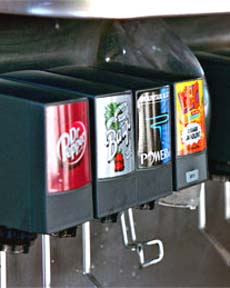fitness news
![]() ,
,![]()
Font size Women’s Health
New York City ban 16-ounce and above bottled drinks and fountain beverages
– Reported, September 14, 2012
 New York City’s Board of Health approved Mayor Michael Bloomberg’s proposed ban on big-size sugary beverages.
New York City’s Board of Health approved Mayor Michael Bloomberg’s proposed ban on big-size sugary beverages.
The measure, which could go into effect as early as March, places a 16-ounce cap on bottled drinks and fountain beverages sold at city restaurants, movie theaters, sports venues and street carts.
It applies to sugary drinks that have more than 25 calories per 8 ounces. It would not affect 100% juice or beverages with more than 50% milk or milk substitute.
In New York, hundreds of soft drink makers and sellers, trade groups and community organizations banded together to fight the ban, forming the New Yorkers for Beverage Choices coalition. That group includes companies and associations such as Coca-Cola and the National Association of Theatre Owners, as well as small mom-and-pop food sellers. Funding comes from the American Beverage Association.
“This is not the end,” said Eliot Hoff, spokesman for New Yorkers for Beverage Choices, after the decision was announced. “We are exploring legal options and all other avenues available to us.”
The New York State Restaurant Association and the theater owners’ group also spoke out against the controversial ban.
“Proposals like the soda ban discourage new business and hurt our reputation as the dining capital of the world,” said Andrew Moesel, spokesman for the restaurant association. “Reducing obesity is an important goal, but we want to partner with government to come up with effective ways to confront the problem.
“What we don’t need is more burdensome regulation making it harder for businesses to function and skewing the competitive landscape.”
But the ban has its supporters.
“The Board of Health did the right thing for New York,” says Steven Safyer, president and CEO of Montefiore Medical Center in the Bronx. “For the past several years, I’ve seen the number of children and adults struggling with obesity skyrocket, putting them at early risk of diabetes, heart disease and cancer.
“Sugary beverages play a major role in this cycle, and are so heavily marketed to children, they jeopardize the next generation of New Yorkers.”
Earlier this summer, a massive marketing effort encouraged consumers to speak out against the ban. New York City government, for its part, has put out a barrage of messages showing that soda can contribute to weight gain. Subway ads show overflowing beverage containers with the headline, “Are you pouring on the pounds?”
Soda makers and sellers have much at stake with this ban. Fountain drinks in particular are high-margin items, says Joe Pawlak, vice president at food industry research firm Technomic. “They’re one of the most profitable items you’ll see,” he says.
There’s also concern that other cities will follow suit. Already, Cambridge, Mass., Mayor Henrietta Davis is weighing a ban of supersized sugary soft drinks at restaurants in her community.
Some in the restaurant industry are trying to get ahead of government mandates, as well as demands from consumers and health activists for more transparent nutritional information. On Wednesday, McDonald’s said it will post calories for all items on its menu boards and drive-thru menus in the United States. Panera Bread has displayed its calorie information on menu boards for two years.
Consumer reaction was mixed after Bloomberg announced his obesity-combating plan in late May. Some said they understood his stance, while others griped that he was taking away their rights.
Some feared that larger-scale bans would come.
“What’s the next step?” said Samantha Hershkowitz, 21, the day the proposal was announced. “Are you going to ban candy in movie theaters?”
Credits: http://www.usatoday.com/